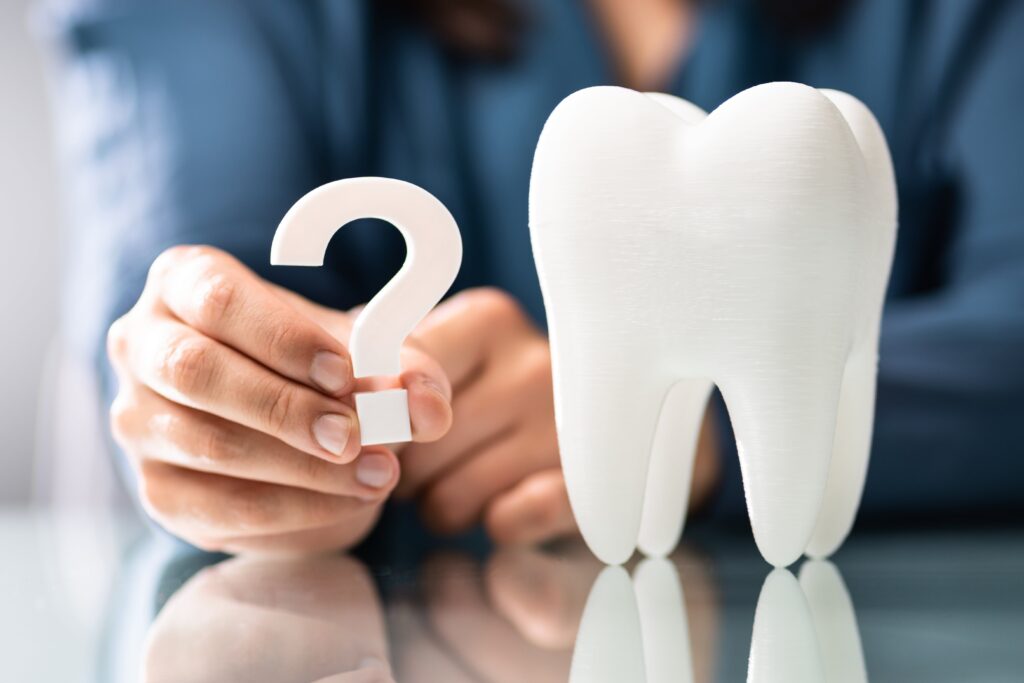
When aiming for a flawless smile, many people weigh the benefits of Invisalign and dental veneers. But how do you decide which is right for you?
This guide breaks down the key differences, helping you make an informed choice that aligns with your smile goals.
Who is it for?
Invisalign is ideal for individuals with misaligned teeth, gaps, overbites, underbites, or other minor orthodontic issues. If you want to straighten your teeth discreetly without using traditional metal braces, this option can be the right one for you.
Dental veneers, on the other hand, are perfect for those looking to enhance their teeth’s appearance quickly. Veneers are thin synthetic shells adhered to the teeth’s front surface. They are made of porcelain or composite and are best for individuals with chipped, stained, or slightly misaligned teeth that orthodontics cannot correct.
Cost
Invisalign is generally priced between $3,000 to $8,000. This price covers the entire treatment, including consultation, custom aligners, and follow-up visits.
Dental veneers tend to be more expensive, with costs between $800 to $2,500 per tooth. The price varies based on the material used and the number of veneers needed.
Reversibility
Invisalign is a reversible treatment, meaning that once you complete the treatment, your teeth will return to their natural alignment if you stop wearing the retainers. If you decide that Invisalign is not for you, you can discontinue treatment at any time without any lasting effects.
Dental veneers are not reversible. The process removes a small portion of enamel from the teeth to ensure a snug fit for the veneers. Once this enamel is removed, it cannot be replaced.
Dental aesthetics
Invisalign offers a natural aesthetic since the aligners are virtually invisible. The clear trays are custom-made to fit snugly over your teeth, making them a subtle and discreet way to straighten your smile. The results will look natural as the teeth gradually shift into place and reflect your original tooth structure.
Dental veneers instantly and dramatically enhance the appearance of your teeth. They correct discolouration, chips, or minor misalignment. Veneer size, shape and colour can be customised to create your ideal smile. However, since they are cosmetic enhancements, the result is often a ‘perfect’ but less natural-looking smile.
Maintenance & longevity
Invisalign requires regular maintenance to keep the aligners clean and clear. You’ll need to remove them while eating or drinking and consistently brush your teeth before putting them back on. With proper care, Invisalign can last the duration of your treatment.
Once placed, dental veneers are relatively low-maintenance. However, you’ll need to maintain good oral hygiene standards such as brushing, flossing, and regular dental check-ups to keep your veneers in good condition. Porcelain veneers are good for up to 15 years, while composite resin veneers can last 5 to 7 years before needing replacement.
Duration of treatment
Invisalign treatment times usually take about 12 to 18 months to complete. However, some people may achieve their desired results in as little as six months. You’ll need to visit your dentist bi-weekly to track your progress and get new aligners as your teeth gradually shift into place.
Dental veneers require a much shorter treatment time. The process typically takes two to three visits over a few weeks. During the first visit, your dentist will do initial assessments and take impressions of your teeth. In the second visit, the veneers are bonded to your teeth, and you leave the office with a brand-new smile.
Durability
Invisalign aligners are durable but can become discoloured or damaged if not cared for properly. Since they are made of clear plastic, they can be prone to scratches. However, durability is generally a minor issue since you will replace the aligners every few weeks.
Dental veneers are highly durable, especially if they are made of porcelain. They can withstand stains and normal biting and chewing forces. However, they can chip or crack if you bite down on something hard or use your teeth as tools. Porcelain veneers are tougher than composite resin veneers, which may need repairs or replacements more frequently.
Which one should I choose?
Choosing between Invisalign and dental veneers depends on your dental needs and aesthetic goals.
Choose Invisalign if you:
- Want to correct orthodontic issues like misalignment or gaps
- Prefer a discreet and gradual treatment process
- Want a reversible option
- Value a natural-looking final result
Choose dental veneers if you:
- Want an immediate and dramatic improvement in your smile
- Have cosmetic concerns like discolouration, chips, or minor misalignment
- Are comfortable with a permanent solution
- Want a customised, flawless appearance
Consult a dentist at Orchard Scotts Dental
Deciding between Invisalign and dental veneers is a personal choice that depends on your dental condition and aesthetic preferences. The best way to make an informed decision is to consult with an experienced dentist in Singapore.
At Orchard Scotts Dental, our dentists will evaluate your dental needs, discuss your goals, and advise you on the best treatment option. Whether you’re looking for the subtle changes that Invisalign can provide or the instant transformation offered by veneers, we are here to help you achieve the smile you’ve always wanted.

